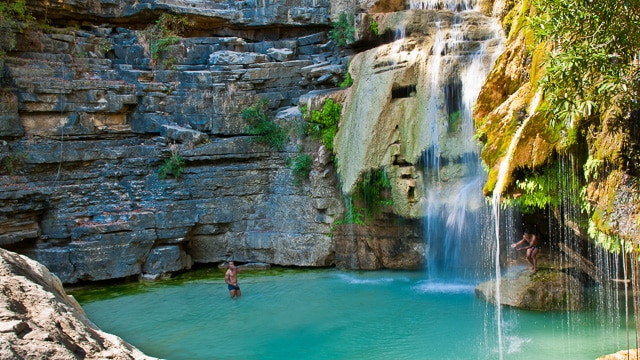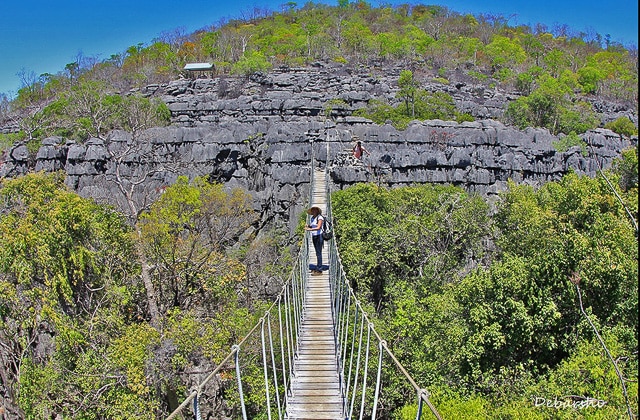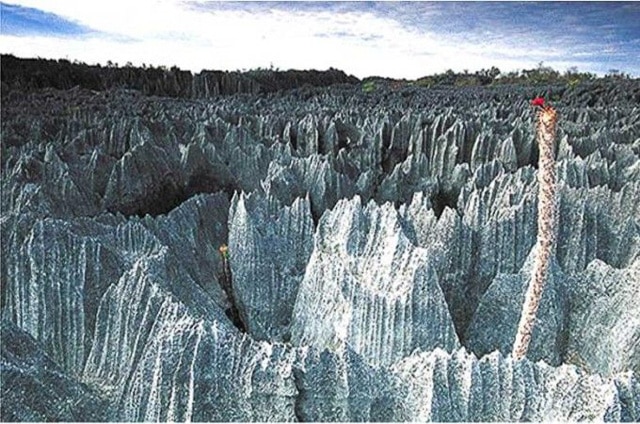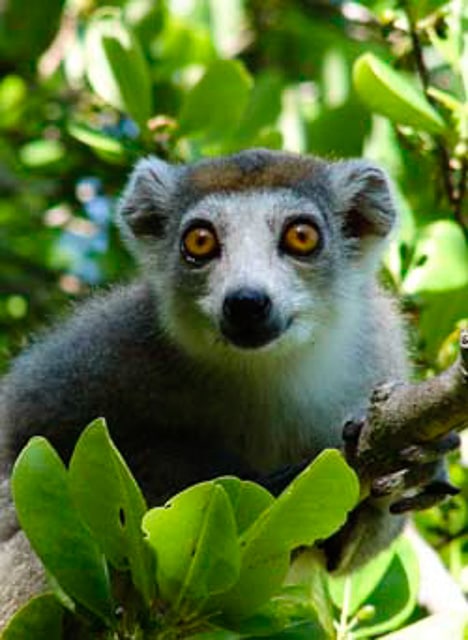About
Top Experiences
Type of Journey
Subscribe to newsletter and stay updated
Read about our travel expeditions, new destinations, new pictures, latest trip schedules
The fantastic national park, located at the height of 1000m, is generally 10°C cooler than Diego or Ankarana and provides lovely forest walkways, waterfalls, and lakes to visitors. While the lower grounds have incredible mineral beauty, the higher altitudes have luxurious forests. Since it rains almost every day in Montagne d’Ambre, the park serves as a natural water reservoir, contributing 50 million cubic meters of water annually to northern Madagascar.
While December to April, the summer season, is best suited for seeing reptiles and amphibians, winter is more suitable for bird watching. A two-day trek to the summit is ideal for discovering the lakes and waterfalls that dot the park. Amber Mountain and the Amber Mountain National Park, named after the local resin, between 800 and 1500 meters above sea level, has its own micro-climate, which is tropical, humic, and wet.
OVERVIEW
Location: North Madagascar
Nearest Airport: Antisiranana airport
How to reach: 45 minutes drive from Antisiranana airport
Famous for: National park,
Crater lakes,
Waterfalls
Best time to visit: August to December
WHAT TO SEE
8 lemurs: Sanford’s brown lemur, lesser bamboo lemur, crowned lemur and five species of nocturnal lemurs
60 reptiles, such as leaf-tailed geckos, tiny stump-tailed chameleons and snakes, more than 40 butterflies and 35 frogs
25 mammals species, among them 6 carnivores such as the fossa and the ring-tailed mongoose.
Situated approximately 30 km southwest of Diego Suarez’s town, it was the first on the island to earn the title of a national park. The three major waterfalls of the park are the Antomboka, the Sacred Waterfall, and the Admirable Fall. Wildlife lovers with limited time may head right to the Sacred Waterfall to see a variety of lemurs, orchids, and birds.

TheAmber Mountain National Park is named after the local trees’ resin that holds medicinal properties, still used by the native Malagasy residents. Cradled in northern Madagascar, this peak rises sharply from the surrounding dry region and has a cool climate and wonderful landscapes.
With a host of endemic flora and fauna, visitors are likely to encounter stump-tailed chameleons,leaf-tailed geckos, and frogs, to butterflies, rare aye-ayes, Rufous mouse lemur, and dwarf lemurs. Spotting the smaller critters can be quite fun!

The park has many walking trails meandering through the forest. Two trails lead to waterfalls, the Cascade d’Antomboka and Cascade Sacrée. While exploring on foot, travelers can have a closer view of the leaf-mimic and stump-tailed chameleons, tree boas, leaf-tailed geckos, butterflies, and pill millipedes that curl up into perfect fluffs. While the seven lemur species in the park include the crowned lemur and Sanford’s brown lemur, hikers often view at least one of the diurnal species.

Joffreville (Ambohitra)
Established in 1902, Joffreville was earlier the French military’s recreational resort. Today, the place continues to exist as a quiet but exceptionally peaceful location that has dilapidated colonial buildings, inconsistent weather, and awe-inspiring views of valleys and mountains.

Most travelers use this town as a connecting point to reach the nearby Parc National Montagne d’Ambre. However, Joffreville is also a splendid base where visitors can delve deeper into the northern highlights, such as the Tsingy Rouges, the Black Lemur Camp, Diego, Ankarana, and Les Trois Baies.